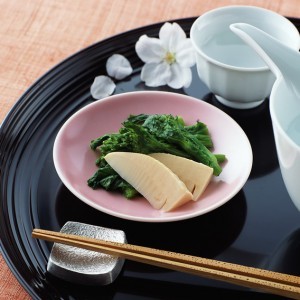
Japanese diet is a low-carb and low-calorie diet developed by Japanese nutritionists, whose protein menu allows you to lose about 10 kilograms in 2 weeks.
Due to being overweight nowadays, many people call payment an incredibly fast lifestyle. We are in a hurry to live, in a hurry to work, in a hurry to eat . . . Also, we often runBut eat and God will send as they say. And in the 21st century, God gave us hamburgers, hot dogs, cheeseburgers and sodas… "What to do? Waste precious minutes for lunch in a restaurantDon't or what? ! - When business "on fire" to cook in the kitchen on its own! Here, they say, the whole successful world stays like that and nothing else. ”This excuse is used by a large one. Part of those who lead active lifestyles. And when your favorite jeans don't fit, when you need to buy a long belt, when between a seductive skirt that fits tightly around the waist and an elastic band. With an ugly amorphous style, we choose another, then, of course, this is a new excuse. Well, in reality - all of this, of course, is not the result of improper nutrition, but just . . . a fat bone. Yes yes and itsNothing should be done about it, a thick bone - it is, very insidious. And as soon as it starts developing - everything, it is impossible to stop.
Now we turn our attention to Japan, the land of vast opportunities, the highest level of technological development and an incredible pace of life. It seems that if one does not have time to stop for the right food, it isLike the Hajapanis. But, amazingly, you rarely get "thick-bonded" among the inhabitants of Japan . . . so what is the secret then?
The fact of the matter is that Japanese snacks are low calorie food, rich in protein, almost devoid of fat and containing "bad" carbohydrates. And the main principle of the Eastern food tradition is moderation. That's why the JapaneseRecipes are said to be one of the healthiest foods for the body.
In keeping with the peculiarity of the Eastern tradition of nutrition, a balanced and extremely effective diet called Japanese was created. In fact, the menu of this diet contains practically no food from traditional Japanese cuisine. But moreThere are many dietary options, but the most popular is the Japanese for 14 days, from the union of haproteins, fats and carbohydrates, in the amounts needed to get everything the body needs, without provocation, at the same time. A salt-free diet. Two weeks of proper "Japanese" nutrition will help "fat bones" lose more weight than 10 kg and maintain results spontaneously for many years.
The essence of the Japanese diet
People who decide to go "Japanese" will have to be patient in their normal way of eating for two weeks. For many people, the diet may seem like a daunting challenge, but its effects are long to come. Won't happen. But the amazing results will last for many years. Only the two-week rule of the "Japanese woman" - and ten kilograms (sometimes even more - it all depends on the initial weight), as it were.
So what's the main secret? Why is the Japanese diet for a week better than other nutritional systems for weight loss? In what amazing way it helps to lose weight even for those who have tried to take many other diets on themselves without any benefit?
This is about carefully selected products for all diet menus - they are combined in such a way as to speed up the metabolic process as much as possible. Therefore, it is very important to strictly follow all instructions, Only for indicated eating, not to "improve" its other products, even though at first glance it seems that they are completely interchangeable. It is also not recommended to swap menu days.
For many women, when choosing their diet, their level of "hunger" is important, as not everyone is able to fight against the will of the samurai, especially the old instinct of all living beings - hunger. That is the fact that the two-week Japanese salt-free diet is not a "hunger" diet. Following this, you won't have to chew a cabbage for weeks and drink a low-fat kefir, yourself. , Cursing those who come with their extra weight and diet. The Japanese woman's menu includes places for tasty and delicious dishes. This diet will appeal especially to those whose breakfast usually consists of only coffee. And lovers of meat and fish will not see anything difficult in this. This is the best diet for them.
The essence of the Japanese diet is easy to explain in just two words - slowness and efficiency.
"Japanese" is a low-calorie protein-fiber diet. The least amount of carbohydrates in the daily diet forces you to lose weight fast - in need of energy, the body can store its own fat reserves in joules. Begins to process. But it is important to remember something else: A Japanese woman's diet will not allow the body to saturate with the full spectrum of vitamins and minerals. Therefore, it is not prescribed (more than 14 days). I am strictly forbidden to go on a long-term diet, so as not to end the weight loss course in a hospital bed.
And if you want to feel like a real Japanese, you can try Japanese sticks instead of traditional and spoons for Europeans. They will not only convey the magnificent feeling of the land of the rising sun, but also the food. Methods will also teach slowly and in small pieces. By the way, this trick is known to many supporters of the diet. A leisurely meal can baffle the body and make you feel full even after a very small meal. In fact, the Japanese should be taught diets for weight loss.
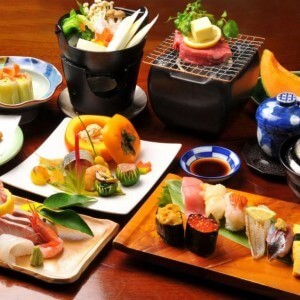
Japanese diet types
The immense popularity of the Japanese diet among women worldwide has led to the rise of several options for this system for weight loss. In particular, dietary options are known:
- Japanese salt-free diet for 7 days;
- (the most commonly used diet) for 13 days;
- for 14 days (varies from previous 13-day diet, only one day);
- Japanese woman with green tea;
- Diet of Naomi Moriyama.
Proponents of each of these techniques call their favorite version of the "real" Japanese woman. In addition, many mines have already been in dispute over the right to diet. Some argue that Japanese nutritionists invented it. Others argue that this system has nothing to do with the former. Whoever is the author of the Japanese diet, the main thing is that it works. And its effectiveness was experienced by millions of donuts around the planet. is.
The menu of the Japanese diet for weight loss includes foods with minimum content of calories, carbohydrates and salt, spices, sugar and sweet confectionery, as well as any alcohol, so the diet is considered strict. Contributes to the rapid breakdown of fat in the body, as the body finds itself in a stressful state and forced to burn its own fat and calories.
diet menu for 7 days
The 7-day Japanese diet is a lighter version of the traditional Japanese diet, but at the same time, the 7-day diet is the basis of the entire diet.
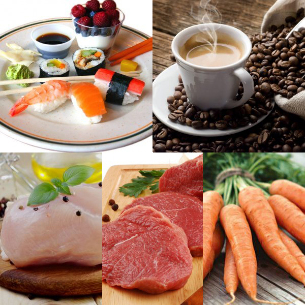
Predefined results: 3-5 kilograms left in the past.
Disadvantages: Longevity of results is not guaranteed, as the body has not yet found time to adapt to the new metabolic system.
day 1
Calorie content of daily diet: 700 kcal.
Product Required:
- black coffee;
- chicken eggs;
- fresh cabbage (Peking cabbage / white cabbage);
- tomato juice (ideally freshly squeezed);
- low-fat fish.
Breakfast:
- Black coffee - it is better to give preference to espresso, but forget about sugar.
Lunch:
- boiled chicken eggs (2 pieces are possible);
- "Japanese" salad - fresh cabbage and a little vegetable oil, no need to add salt;
- a glass of tomato juice.
Dinner:
- Steamed Fish - Heck, Cod, Pollock are ideal (portions not to exceed 200 grams);
- Japanese Salad.
day 2
Calorie content of daily diet: 1000 kcal.
Product Required:
- coffee;
- rusks;
- fish (fatty varieties);
- cabbage;
- vegetable oil;
- beef;
- kefir.
Breakfast:
- coffee;
- rusks - Take a small, weighing about 30 grams.
Lunch:
- Fish, fried or stew - For variety and extra consumption of fatty acids, it is better to give preference to catfish, salmon, black halibut. In total, no more than 150 grams;
- "Japanese" Salad.
Dinner:
- Beef - Boil about 200 grams. Consume without salt;
- Kefir - You can skim, but no more than 200 grams of glass.
day 3
Calorie content of daily diet: 1000 kcal.
Product Required:
- coffee;
- courgette / parsnip;
- apple;
- chicken eggs;
- veal;
- cabbage;
- vegetable oil.
Breakfast:
- Black coffee - don't forget about the sugar moratorium.
Lunch:
- zucchini (quite enough) or parsnip root (also large) - brown in vegetable oil (do not use flour or batter for frying, salt is also prohibited);
- Apples - Not taken away, it is advisable to limit yourself to one fruit.
Dinner:
- boiled chicken eggs - 2 pieces;
- Boiled Veal - Limits the appetite to a 200-gram slice prepared in a salt-free manner;
- "Japanese" Salad.
day 4
Calorie content of daily diet: 1000 kcal.
Product Required:
- coffee;
- carrots;
- hard cheese;
- chicken egg;
- apple.
Breakfast:
- Black non-sugar coffee.
Lunch:
- carrot - boil, it is allowed to take 3 large roots;
- some cheese - choose from hard varieties, limiting yourself to 20 grams;
- Raw Chicken Egg - One is enough.
If desired, all the ingredients of a 4-day lunch can be added to the same dish - salad.
Dinner:
- Apples - Many fruits are allowed.
At this point, the feeling of hunger will no longer be as strong as before. A small portion of food is followed by fullness.
day 5
Calorie content of daily diet: 800-1000 kcal.
Product Required:
- carrots;
- lemon juice;
- marine fish;
- juice;
- fruit.
Breakfast:
- Carrot and lemon juice - Grind the vegetable and season with juice. You cannot add sugar. This day is also excluded from breakfast and coffee.
Lunch:
- fried fish - about 350-400 grams, variety - any of the sea;
- Tomato juice - For a diet, to prepare yourself, it would be more correct to use fresh. Quantity - no more than 200 grams.
Dinner:
- Fruits - but in any case you should not consume, especially before bed, any variety of grapes, or bananas. They will surpass all the results achieved so far.
day 6
Calorie content of daily diet: 900-1100 kcal.
Product Required:
- coffee;
- chicken fillet;
- raw cabbage;
- carrots;
- vegetable oil;
- Chicken Eggs.
Breakfast:
- Black non-sugar coffee.
Lunch:
- Chicken fillet - limit portion to 500 grams, take meat without skin. Boil in water without adding salt;
- Salad - On this day, a traditional "Japanese" salad can be improved by adding grated raw carrots.
Dinner:
- chicken eggs - boil 2 pieces;
- Carrots (you can take a large one) - Grind a raw vegetable, season lettuce with a small amount of vegetable oil (maybe olive oil).
day 7
Calorie content of daily diet: 700-800 kcal.
Product Required:
- tea;
- fruit;
- beef meat;
- eggs;
- cabbage;
- vegetable oil.
Breakfast:
- Tea - It is advisable to choose green, good varieties rich in beneficial antioxidants.
Lunch:
- Beef beef - Boil approximately 200-gram pieces. Do not use salt or other spices while cooking the meal;
- Fruits - On the last day of the diet, you can treat yourself to dessert for lunch. But don't forget about the ban on the use of bananas and grapes.
Dinner:
On this day for dinner, as a reward for endurance, you can choose any of the previous dinner options. For example, olive oil for a choice of beef, eggs and cabbage salad. Take it.
This will abolish the diet for some. For those who have chosen longer versions of the Japanese woman, the 7th day is only the equator of work on changing oneself.
For those accustomed to eating calories by counting calories, "Japanese" may seem like a hard choice to lose weight at first. But the discomfort will only be noticeable for a few days - then the body gets smaller portions of food. Adapts to, starts eating fast. After 5 days of a new diet in the body, the first phase of restructuring begins to accelerate metabolism - the main goal of any diet is to lose excess weight, The excess fluid is removed, the edema disappears. To get the best results in parallel with the diet, you can take a course of anti-cellulite massage.
Japanese diet for 13 days
The 13-day Japanese diet is the most popular. This version is considered a complete weight loss course.
Estimated Results. If you are ashamed to follow all prescriptions, at the end of the 13-day day, you will miss about 10 kilograms and about 30 cm of volume (sometimes more).
How is it different from the 7-day option? In fact, this is a continuation of the lighter version of "Japanese woman". That is, you must go through 7 days of "Japanese" life, and resume on the 8th day, repeating the days from first to sixth.
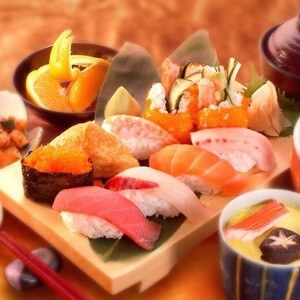
Japanese diet for 14 days
The 14-day version of the Japanese diet was also the basis for the 7-day menu, with some nuances. The main difference from the previous two options is that in the first week you have to strictly follow the 7-day menu. Is required, and another week is required to eat according to the same schedule, but in the reverse order. This means that the eighth day diet will correspond to the 7-day last day diet, the ninth day - the sixth day menu, Tenth Day Menu - 5th Day Menu . . . and according to this theory, continue until the end of the second week. Natijatan, on the last 14 days of the diet with the first day diet of the 7-day version of "Japanese Woman"Finish.
Starting on the 8th day of dietary nutrition, the detoxification process in the body is activated, and due to the salt-free principle of nutrition, excess fluid is removed at the intracellular level, completely eliminating edema. It is important that it is in the second week of the diet that the body is used to the new metabolic rate. Thanks to this, even after switching to a normal diet (in general - itsDoesn't mean eating again in the basin for incoming sleep, but you don't have to be in "hunger" mode) body weight won't increase, on the contrary - burn fat quickly during the dietThis amazing effect will last for about 2 years, but provided that the diet was maintained correctly. People who have already experienced the work of a "Japanese woman" claim that after a year of diet. Upon completion, the weight is adjusted downward. If you repeat the "Japanese woman" again (but not six months after the first course), then in a year, practicallyWithout effort, it is indeed possible to get rid of 20 kg of extra weight.
Diet and Salt
Have you ever wondered why almost every more or less effective diet includes a prohibition on salt? According to experts, the point is that,
1 gram of salt maintains an entire liter of fluid in the body.
And it does not exceed one kilogram for extra weight. In addition to false excess weight, thanks to salt, the weight does not accumulate due to the layer of fat, but due to the stagnation of the fluid, excessive intake of salinity in humans. In addition, a few days of salt-free diet can reduce blood cholesterol levels and improve the condition of blood vessels.
Of course, it is impossible to completely eliminate salt from consumption, and it cannot be done. But the menu of "Japanese woman" includes products that already contain a certain amount of salts - organs. Is sufficient for the normal functioning of the body. In particular organic salt is found in some vegetables, fish, meat. It is impossible to eat canned vegetables, smoked meats, semi-finished products during a diet - their composition is quite large in allThe amount is table salt.
Green Tea
In addition to the classic version of the Japanese diet, the menu also has an option that recommends using green tea instead of coffee. Many nutritionists consider this variation of the "Japanese woman" to be more beneficial to the body. .
Assuming that the Japanese diet is based on a protein diet, it is important that green tea (especially its Japanese form) contains a large amount of protein, and in terms of its nutritional value, this drink comes from legumesIs not despicable.
The second plus in favor of green tea is the presence of antioxidants in the structure that protects the body from toxins and promotes the elimination of toxins.
Third, and this is probably the most important thing for those who lose weight, the unique chemical composition of green tea helps speed up metabolism by 4 percent (60 calories daily without green teaMore lit. ).
The Japanese Green Tea diet lasts for 2 weeks. The components are practically identical to the classic version of "Japanese", although there are still some excellent features.

Detailed Japanese Green Tea Diet Menu
day 1 / day 14
Breakfast:
- green tea - glass;
- Fat-free cheese - 150 grams.
Lunch:
- cabbage, stew with butter - 300 grams;
- Boiled Chicken Eggs - 2 pcs. ;
- Fresh apple - glass.
Dinner:
- salad or boiled vegetables;
- zucchini or steamed fish - 200 grams.
day 2 / day 13
Breakfast:
- green tea - glass;
- hard cheese - 2 pieces;
- toast or diet biscuits.
Lunch:
- boiled or raw cabbage, seasoned with oil;
- boiled fish;
- Green Tea - Glass.
Dinner:
- vegetable salad;
- boiled veal - 300 grams;
- boiled chicken egg - 2 pcs. ;
- Japanese Green Tea - Glass.
day 3 / day 12
Breakfast:
- Japanese Green Tea - Glass;
- Diet Cookies.
Lunch:
- boiled zucchini / cauliflower;
- apple - 1 pc;
- Green Tea - Glass.
Dinner:
- yellow-green vegetable salad;
- boiled veal;
- Boiled Chicken Eggs - 2 pcs.
day 4 / day 11
Breakfast:
- Japanese Green Tea - Glass;
- Fat-free cheese - 150 grams.
Lunch:
- Raw grated carrots with olive oil;
- chicken egg;
- Green tea without sugar.
Dinner:
- green tea;
- Fruits (not grapes and bananas).
day 5 / day 10
Breakfast:
- green tea - glass;
- croutons with jam - 2 pcs.
Lunch:
- boiled fish - 200 grams;
- tomato juice - glass.
Dinner:
- green vegetable salad;
- hard cheese - 2 pieces;
- Green Tea - Glass.
day 6 / day 9
Breakfast:
- rye flour croutons - 2 pcs. ;
- Japanese Green Tea - Glass.
Lunch:
- boiled with raw cabbage / olive oil;
- boiled chicken without skin - 400 grams;
- Japanese Tea - Glass.
Dinner:
- carrots (boiled / raw);
- boiled eggs - 2 pcs. ;
- unsweetened green tea.
day 7 / day 8
Breakfast:
- Japanese tea - glass;
- cheese (any of the harsh varieties) - 2 small pieces.
Lunch:
- boiled veal - 200 grams;
- boiled / boiled vegetables;
- Green tea without sugar - Glass.
Dinner:
- fruit - any;
- Japanese Green Tea - Glass.
The effectiveness of this type of Japanese diet is enhanced in the diet with green tea, and the variety and deliciousness of the menu make it easy to tolerate periods of food restrictions. Repeat the diet - not before one year. And soThe results achieved in two weeks are long lasting, it is advisable to follow a healthy lifestyle in the future, eliminate tobacco and limit alcohol content and follow proper nutrition in daily life.
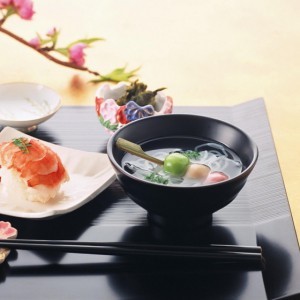
main dish
Whatever Japanese diet you choose, any of them will have traditional cabbage salad and boiled meat. These recipes can be prepared in various ways. But remember that they are part of the diet and cooking. The process is slightly different from cooking. Simple food.
Making the Perfect Japanese Salad:
- Take raw or slightly ripe cabbage (mango cabbage or Peking cabbage).
- Finely chop.
- Easily squeeze out excess moisture.
- Salad base prepared with olive or sesame oil.
- Stir and drink it.
diet boiled meat
- Prepare the meat. If it is chicken, remove the skin. Peel veal or beef from the film.
- Rinse well with cold water.
- Pour the meat into the saucepan, cover with very cold water.
- After boiling, let the water dry, rinse the meat and, again, fill it with water, set it on fire.
- cook until tender without adding spices.
Tip: Mix an onion, a small carrot and a little bit of greenery in the water to improve the taste during cooking. Many people wonder how to replace beef in the Japanese diet. This menu features youthVeal is allowed to be introduced, which is easy to digest, but with the same chemical composition as beef.
How were the products selected?
Almost all sources say that the list of foods allowed during the Japanese diet is special and should not be changed. So what is the secret of this particular diet?

Coffee. Many people start their day with this fragrant drink. A cup of black ground coffee serves a traditional breakfast and Japanese diet.
What is the use?
Black coffee without sugar, which has an invigorating effect, helps the body to wake up faster and start the process of burning calories. And when food is not consumed by food in the morning, the bodyBurning begins to produce energy. Self stores - subcutaneous fat.
You can diversify the taste of your morning drink by adding it to vanilla, dark chocolate or citrus fruits. Add extra ingredients in small doses.
Cabbage. This vegetable was not chosen incidentally for diet. Also, cabbage is one of the vegetables with the so-called "minus" calorie content (the body spends more energy on its digestion than it receivesis).
What is the use?
Cabbage, white or Peking cabbage, has a strong effect on blood vessel walls, reduces cholesterol levels, and cleans the intestines. For those prone to intestinal disturbances, use cabbageIt is better to boil slightly before.
Olive oil. One teaspoon of oil added to the saline normalizes metabolism, has beneficial effects on liver, kidney and pancreas.
Eggs. This product has good nutritional properties and is an excellent source of protein, fat and carbohydrates, as well as many vitamins and minerals.
Tomato juice. Nutritionists call it one of the healthiest. The unique chemical structure of tomatoes prevents cardiovascular and oncological diseases, accelerates metabolic processes in the body, improves mood and has beneficial effects on the nervous system. . These is best absorbed without salt, which is especially important for a salt-free diet.
Fish. Known for its ability to quickly remove toxic substances and toxins. It is a valuable source of protein and amino acids. It affects the body as a preventive measure against stroke.
Fruits. Usually, during a diet, the amount of carbohydrates consumed must be drastically reduced. But it is completely undesirable to exclude from the diet - they are an important source of energy. The body with fruits "Correct "carbohydrate is obtained. But it is better to exclude dietary bacon and grapes, which contain too much sugar.

Naomi Moriyama's Diet
It's hard not to believe the effectiveness of the Japanese diet, especially for those who still decided to try it on their own. But sooner or later, many people ask the question: practically anything on the menuIf not, why is this diet called the "Japanese diet"? From traditional recipes to the land of the rising sun. But there is an explanation for this. According to one version, this basic diet is a development of the nutritionists of the Japanese clinic "Yellow".
But there is another version of "Japanese", created by marketer Naomi Moriyama - as a response to Frenchwoman Mireille Guiliano, author of the book "Why French Women Don't Get Fat". In fact, according to research, The French are not among the slimmest in the world. The least obese people live in Japan - only 3 percent, while France has about 11% of donuts, and in the United States - more than 32%. Collected those that are specific to its people and adapted them into a diet.
Food rules from the land of the rising sun
Residents of the East eat about 100 types of different foods a week, of which the total calorie content is less than a quarter, for example, the weekly dose of calories in Americans. And the only secret to the Japanese cohesion is aThe simple rule is: fill the stomach 80 percent.














































































